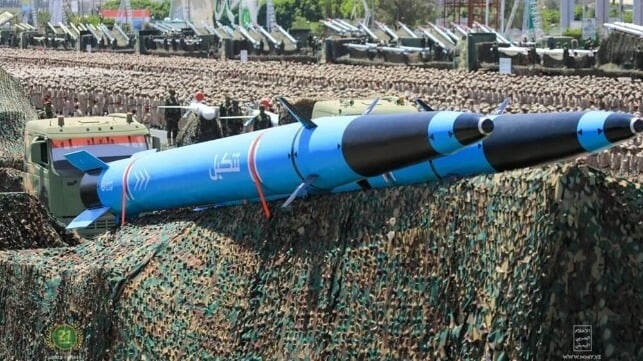Top Pentagon Weapons Buyer Says Houthis Have "Scary" Anti-Ship Missiles

Last week, the Pentagon's most senior acquisition official warned that Yemen's Houthi rebels have developed "amazing" ballistic missile capabilities over the course of the past year - capabilities that are only shared by a few advanced nation-states.
Dr. William LaPlante, current Under Secretary of Defense for Acquisition and former Assistant Secretary of the Air Force for Acquisition, told a panel organized by Axios that the Houthis have achieved a level of missile technology and a rate of production that are astonishing for a regional militant group of their size. "I'm a physicist and an engineer, and I've been around missiles most of my career . . . and what the Houthis have done in the last six months, I'm just shocked," he said.
The problem is not so much that they have been using up U.S. Navy stockpiles of SM-class antiaircraft missiles, though this is also true, he said; the problem is that the Houthis are getting good at what they do. Up to the limits of what he could say in an unclassified setting, LaPlante hinted at a high degree of advancement in the latest generation of Houthi missiles.
"The Houthis are getting scary. They now have anti-ship ballistic missile capabilities that are long range and can do things that are just amazing," he said. "You have this group producing thousands of ballistic missiles that . . . I'll just say, can do technical things that only the advanced countries could do. And they're producing them at at some degree of scale. It's just remarkable."
The terrorist organization has transitioned away from UAVs and towards ballistic missiles for attempting strikes on U.S. Navy assets, and this is because of the missiles' heavier punch, he said. "A one-way UAS or USV is bad, but you have a ballistic missile hit a surface combatant, that's a very bad day," LaPlante said.
The Houthis are just one example of how the world has become a very dangerous place, LaPlante said. Russia is spending 10-15 percent of GDP on equipping its military, more than three to five times the spending level of most NATO members. "Our countries are going to need to have more political will, unfortunately, to start mobilizing," he said. "The issue we have right now is fundamentally a resourcing issue right now, both here and internationally. We've found that if you have the resources, you might not like the timelines initially, but you can get production ramped up."
